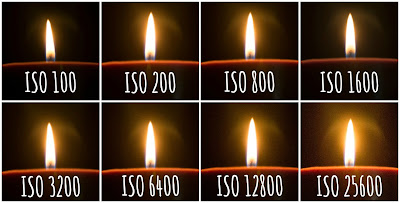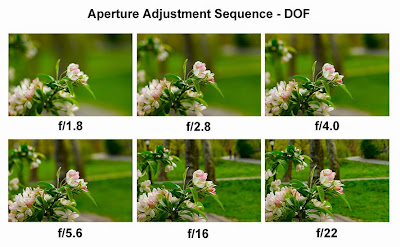Introduction
Exposure is the intensity of light falling on a photographic film. A combination of four factors contribute to the exposure of an image:
1) Amount of light - If a camera produces a normal image under the sunlight, the image produced by the camera in a scene using a dim light bulb for lighting will seem underexposed.
2) Aperture - This is the adjustable opening within the camera lens through which light travels, this can be altered in size to determine how much light passes through into the lens.
3) Shutter Speed - This is a plate located between the lens and the camera recording surface that rotates. The adjustable speed determines the time each frame is exposed to light.
4) Recording Surface Sensitivity - This is the imaging device that is part of the camera that is hit by light. In a video camera, this is the CCD/CMOS chip, and in a film camera it is the film stock. When this is sensitive to light, it is more likely to produce bright images with smaller amounts of light.
Pull Focus
Pull Focus
The pull focus (or rack focus) is a camera technique in which you change the focal point of the camera during a shot. This means adjusting the focus from one subject to another. This can be used to direct the audience's attention at a particular subject on screen, by focusing on it and leaving the background out of focus. The pull focus is a technique often used to direct the viewer's attention to a particular subject. By focusing on something on the screen it will also usually alter the depth of field, which can also provide more meaning in the shot.
The video above demonstrates the effect of a pull focus, in the first you can see how the subject in the background is at first out of focus, but comes into focus as the focal point of the camera changes, highlighting a certain subject on screen by making it stand out.
The video below demonstrates just a few examples of the pull focus technique being used within cinema, from films such as Rambo.
ISO
The ISO figure on the camera is the indication of how sensitive the image sensor in the camera is to light. The higher the ISO number, the more sensitive your camera is to light, therefore the lighter your image will be. However, a higher ISO brings more 'noise' to the camera image, meaning the image will have more grain. Higher ISO figures are generally used in darker settings in order to produce a lighter image, this is why photos taken at night are 'noisier' with more grain.
The images below shows how a difference in the ISO can affect the image produced. As you can see a lower ISO figure produces a clearer picture, however the camera will be less sensitive to light, and therefore the image produced will be darker. A higher ISO figure such as 3200 will produce a lighter image, however as you can see from both images, this creates more 'noise' and produces a grain effect on the image. This is why photos and videos taken in darker sequences will be of a lower quality


Aperture
The aperture of the camera is the opening in the lens that can be adjusted to control the amount of light that reaches the image sensor. A smaller aperture allows less light through, whereas a larger aperture allows more light to enter. Aperture is expressed in f-numbers known as f-stops; a smaller f-stop means the aperture will be larger, and vice versa. For example, f/1.4 is larger than f/8.0. The size of the aperture has an impact on the depth of field of the image, this is the area of the image that looks sharp. A shallow depth of field means the foreground will be isolated from the background, as it will be sharp and the background will be blurry. The larger the aperture, the shallower the depth of field.




In experimenting with different aperture settings, we also used different types of lenses with each setting. The clips in the first video were all shot with an aperture setting of F2.8, but each with different lenses: 50mm, 60mm, and 135mm.
Shutter Speed
The shutter speed or exposure time is the length of time for which the digital sensor in the camera is exposed to light. The higher the shutter speed figure, the the more frequently the sensor is exposed to light. A higher shutter speed will also allow for clear freeze frames during a video, this is used by nature photographers for example, in order to obtain crisp shots of animals in the wild. A slow shutter speed can create a 'motion blur' effect, this can be used to demonstrate a passing of time or movement, and can represent a person's separation from reality or society.
The first clip was shot with a shutter speed of 1/30, and the first screenshot shows how a slow shutter speed creates blur in a still image, as each frame is exposed to light for less amount of time. The second clip was shot with a shutter speed setting of 1/100, and the screenshot shows that higher shutter speeds can be used to capture clear and crisp images. The image below displays clearly how the shutter speed affects the intensity of motion blur on a picture.



No comments:
Post a Comment